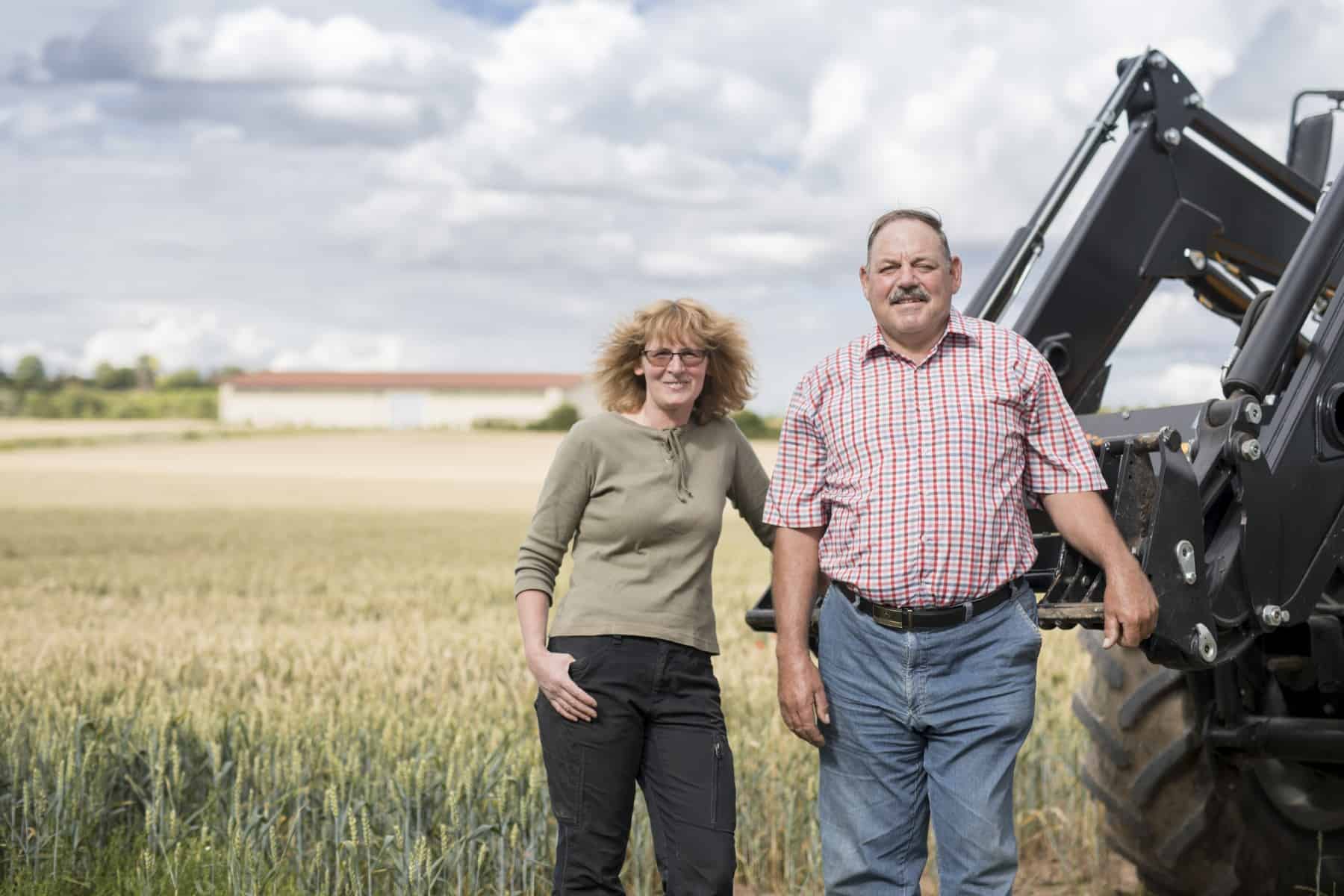Ernst-Otto and Claudia Rüdinger from Wallertheim grow barley, the grain used by BESTMALZ to make its quality malts. They also produce wine – at first glance an unusual combination, but not uncommon in Rhine-Hesse. Wine and barley have similar requirements: They both need plenty of warmth, sunshine, and soil that does not need much rain. BESTMALZblog asked its longstanding supplier about the work involved and the challenges of growing barley.
The Rüdingers’ farm has been in family ownership since the 18th century. Ernst-Otto Rüdinger studied agriculture and took over his parents’ business in 1983. “Ever since I was a child, I knew that I would take over the farm.” And the next generation is waiting in the wings: Ernst-Otto’s son Sven, a state-certified economist specialized in viticulture and oenology, will carry on the business one day. Ernst-Otto Rüdinger’s wife Claudia comes from a family of horse-breeders. The trained horse handler is fully integrated in the family business and only has time for her horses in the early morning or after work in the evening. But her heart still beats for these noble four-legged beasts and she uses her (rare) free weekends to go out in a horse-drawn cart or ride her horses through the picturesque countryside of Rhine-Hesse that could easily be mistaken for Tuscany or Andalusia.
Rhine-Hesse: An ideal region for barley and wine
Back in the 1960s, many farmers in the state of Rhine-Hesse expanded their portfolio to include wine. Today, it is the largest wine-growing region in Germany. But it is also a good location for brewer’s barley as it offers ideal climatic conditions: The grain takes 100 days from sowing to harvest and needs plenty of warmth during this time. That frequently means dry weather, but the loess soil in this region has a good water balance, so farmers can manage without much rainfall. And anyway, barley needs less water than other kinds of grain. The so-called soil value – a comparative assessment of soil quality used in Germany – is 85 to 90 points, just under the maximum of 100.
“You mustn’t bury the barley”
But good soil is only half of the story. In spring, Ernst-Otto Rüdinger prepares the seedbed, something that requires a sure instinct because he has to find the perfect moment: If the soil is too wet it will get compacted when the tractors drive over it. If it is too dry the barley will not germinate properly. After sowing, it is rolled to ensure that the seeds end up at the right depth. “If they are too near the surface they will not germinate, but you mustn’t bury them either,” he says. This is a decisive moment: “If you make a mistake at the beginning, nothing will come of it.”
After that, the farmer does not have much influence on the barley – everything else is more or less governed by the weather. For example, if it doesn’t rain for weeks after sowing it is a problem. But it shouldn’t be too cold either. If it is too dry in summer, when the barley matures shortly before being harvested, then the grains shrink, are not heavy enough and will not be accepted by the malthouse. In this case, the barley can be sold as animal feed, but that does not produce as much revenue. This means that the agricultural weather forecast is particularly exciting during this time of year!
Harvest in July
Around the middle of July, the barley is harvested and prepared for delivery: The cereal is cleaned, and split and broken grains are sifted out. Only the right quality is accepted. The size of the grain must be just right. A long time beforehand, a supply agreement has been drawn up with a buyer (in this case BESTMALZ), specifying the variety of grain that must be grown and is guaranteed accepted. These supply agreements are important because certified seeds have to be bought externally (in Germany: Z-Saatgut, which stands for “zertifiziertes Saatgut” i.e. certified seeds bred anf grown by barley breeders). The Rüdingers have partnered with BESTMALZ since the 1980s. Ernst-Otto supplies his entire harvest of around 100 to 120 tons of barley a year to BESTMALZ’s production site in Wallertheim.
Always something to do
Even after the barley has been harvested and delivered, the Rüdingers’ work is not yet done: There is plenty to do in the vineyard, the leaves have to be cut and the vines treated for fungal infestations (if it is very hot this has to be done at night because otherwise the plants can be damaged by the sun). In fall, the grapes are harvested and pressed and the winter wheat is sown. In winter, the soil has to be processed and there is work to do in the wine cellar, sampling and refining the wine and monitoring fermentation. And then it is time to prepare the ground again for sowing the barley in March. “There is always something to do on a combined farm,” says Ernst-Otto Rüdinger.
He loves his job, “the independence, the freedom of the job when you see what you have produced.” And although he is a wine-grower he also enjoys drinking a beer now and again!

